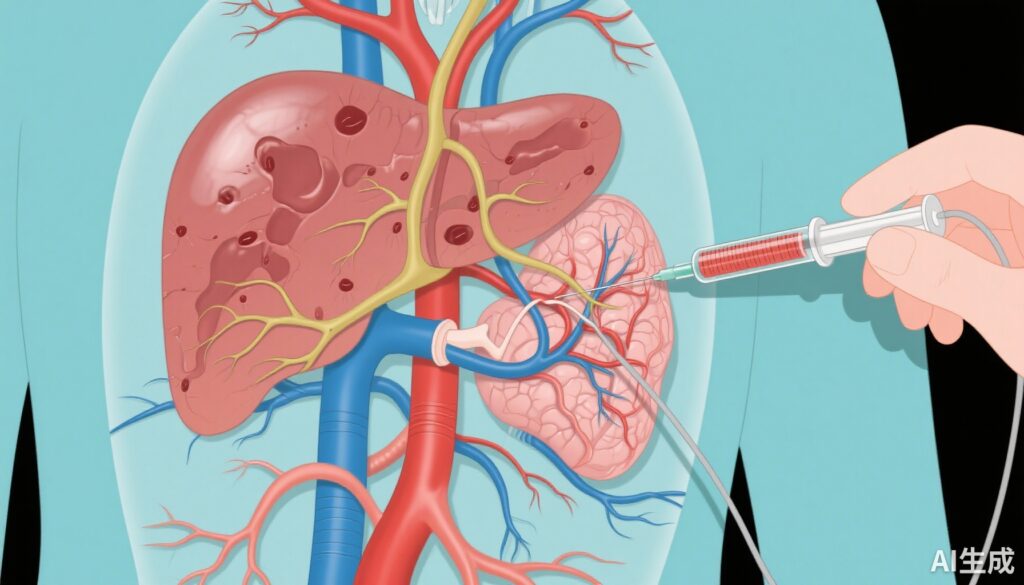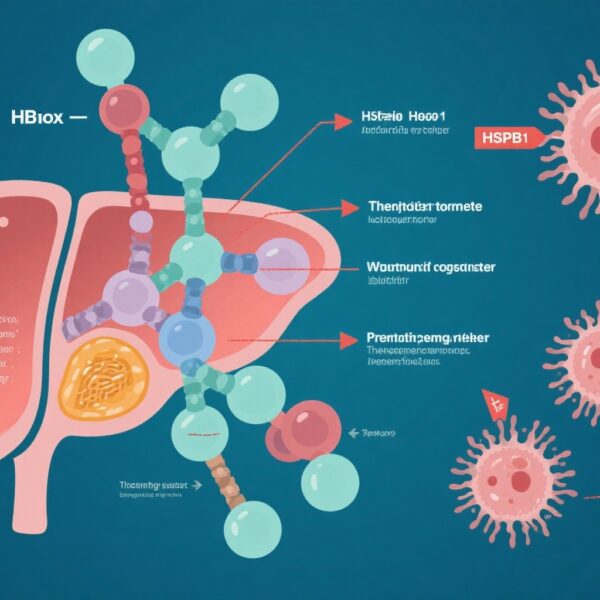Highlight
- The 2022 ESC/ERS updated pulmonary arterial hypertension (PAH) criteria identify early portopulmonary hypertension (PoPH) in patients with cirrhosis, characterized by mildly elevated mean pulmonary arterial pressure (mPAP) and pulmonary vascular resistance (PVR).
- Early PoPH independently predicts significantly increased mortality risk, even after adjusting for liver disease severity and portal hypertension.
- Survival at three years is substantially reduced in early PoPH compared to normal mPAP, emphasizing the clinical relevance of mild pulmonary vascular changes.
- Findings advocate systematic PoPH screening in cirrhotic patients and prompt consideration of early targeted interventions to improve outcomes.
Background and Disease Burden
Portopulmonary hypertension (PoPH) is a serious, often under-recognized complication of cirrhosis and portal hypertension, characterized by the coexistence of pulmonary arterial hypertension (PAH) with portal hypertension. Cirrhosis affects millions worldwide, and portal hypertension commonly develops due to increased intrahepatic resistance. Among complications, PoPH stands out due to its impact on right ventricular function and overall mortality.
Until recently, diagnostic criteria for PoPH were uniform and considered higher thresholds, potentially missing earlier forms of the disease. In 2022, the European Society of Cardiology (ESC) and European Respiratory Society (ERS) revised the definition of PAH, lowering the mPAP threshold to >20 mmHg (vs. ≥25 mmHg previously) and PVR to >2 Wood units, recognizing earlier stages of pulmonary vascular disease. This paradigm shift prompted the need to evaluate the prognostic implications of early PoPH in cirrhosis, which had not been systematically studied.
Study Design
The PORTO-DETECT cohort is a longitudinal, multicenter observational study conducted from 2015 to 2023 involving 428 adult patients with cirrhosis and portal hypertension undergoing right-heart catheterization (RHC), the gold standard for diagnosing PoPH. Patients were stratified into five hemodynamic profiles based on the revised 2022 ESC/ERS criteria:
- Normal mPAP
- Early PoPH: mPAP 20.5-24.5 mmHg with PVR >2 Wood units
- Classic PoPH: mPAP ≥25 mmHg with PVR >2 Wood units
- Post-capillary pulmonary hypertension
- Unclassified pulmonary hypertension profiles
The primary endpoint was all-cause mortality with liver transplantation considered a competing risk. Multivariable Cox proportional hazards regression and competing-risk models adjusted for demographics, liver function, and portal hypertension severity were employed to delineate independent mortality predictors.
Key Findings
With a median follow-up of 20 months (interquartile range 8 to 36 months), survival rates differed markedly across groups. Three-year survival was 76.7% in patients with normal mPAP, but dropped to 49.5% in the early PoPH group and 42.0% in classic PoPH.
After adjustment, early PoPH was an independent predictor of mortality (hazard ratio [HR] 3.5, 95% confidence interval [CI] 1.9–6.3, p < 0.01), similar in magnitude to classic PoPH (HR 4.5, 95% CI 2.6–7.6, p < 0.01). These associations remained robust even when accounting for liver transplantation as a competing event. In contrast, post-capillary and unclassified pulmonary hypertension groups did not show statistically significant mortality risk differences compared to normal mPAP.
This demonstrates that even mild pulmonary vascular changes detected by the revised criteria portend a substantially worse prognosis, independent of cirrhosis severity or portal hypertension burden.
Expert Commentary
This study provides compelling evidence that the lower mPAP and PVR thresholds introduced by the 2022 ESC/ERS guidelines uncover a clinically relevant subgroup of cirrhotic patients experiencing early pulmonary vascular remodeling. The increased mortality risk associated with early PoPH suggests pathophysiological progression begins before reaching conventional diagnostic cutoffs.
Clinicians should recognize that mild elevations in pulmonary hemodynamics in cirrhosis are not benign. Early identification could allow timely interventions, including PAH-specific therapies and optimized management of portal hypertension, potentially improving outcomes.
Limitations include the observational design, which cannot prove causality, and potential selection bias since all subjects underwent invasive RHC. Nevertheless, the large multicenter cohort and rigorous methodology strengthen confidence in these findings.
Furthermore, future research should focus on elucidating mechanisms driving early PoPH and establishing evidence-based therapeutic protocols tailored to this subgroup.
Conclusion
The PORTO-DETECT cohort study definitively demonstrates that early PoPH, as defined by the updated 2022 ESC/ERS criteria, is a powerful independent predictor of mortality among patients with cirrhosis and portal hypertension. This highlights the necessity for systematic screening of pulmonary hemodynamics in this population.
Adopting these revised diagnostic thresholds in clinical practice enables earlier risk stratification and may prompt timely therapeutic interventions to alter the otherwise poor prognosis associated with PoPH. Integrating multidisciplinary care involving hepatologists, cardiologists, and pulmonologists will be essential to improve survival and quality of life in affected patients.
Funding and Registration
The study was conducted under the auspices of multiple European academic centers specializing in hepatology and cardiology. Specific funding sources and registration details were not provided in the preprint.
References
Téllez L, Donate J, Guerrero A, et al. Early portopulmonary hypertension predicts mortality in patients with cirrhosis: insights from the PORTO-DETECT cohort. J Hepatol. 2025 Oct 9:S0168-8278(25)02490-0. doi: 10.1016/j.jhep.2025.09.011. Epub ahead of print. PMID: 41076090.
Simonneau G, Montani D, Celermajer DS, et al. Haemodynamic definitions and updated clinical classification of pulmonary hypertension. Eur Respir J. 2019 Jan 24;53(1):1801913. doi: 10.1183/13993003.01913-2018.
McLaughlin VV, Archer SL, Badesch DB, et al. ACCF/AHA 2009 Expert Consensus Document on Pulmonary Hypertension. J Am Coll Cardiol. 2009 Dec 1;53(17):1573-619.
Krowka MJ, Mandell MS, Ramsay MA, et al. Portopulmonary hypertension: a report from a multicenter US registry. Hepatology. 2006 Apr;43(3):641-50.
Galie N, Humbert M, Vachiery JL, et al. 2015 ESC/ERS Guidelines for the diagnosis and treatment of pulmonary hypertension. Eur Heart J. 2016 Jan 1;37(1):67-119.



